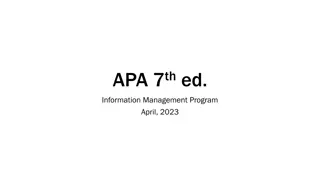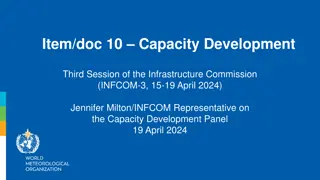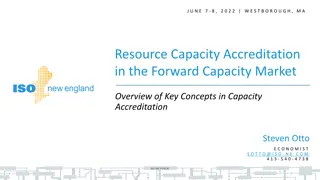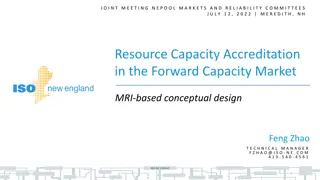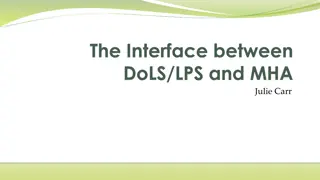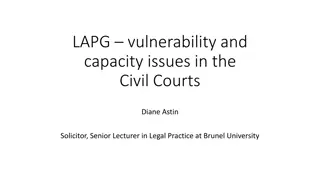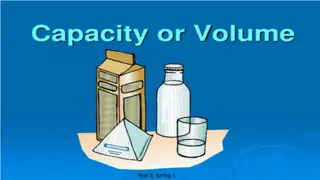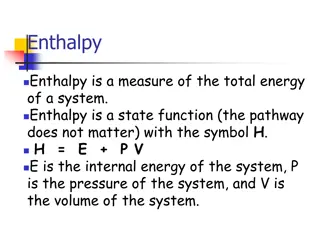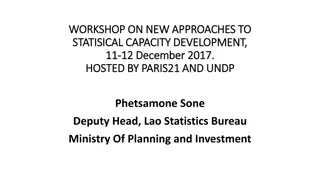
Understanding the Role of Technical Assistance in Development Programs
Explore the significance of Technical Assistance (TA) in development initiatives, evaluating its effectiveness based on objectives and outcomes. Delve into case studies and insights from Abt Associates on global aid and capacity development.
Download Presentation

Please find below an Image/Link to download the presentation.
The content on the website is provided AS IS for your information and personal use only. It may not be sold, licensed, or shared on other websites without obtaining consent from the author. If you encounter any issues during the download, it is possible that the publisher has removed the file from their server.
You are allowed to download the files provided on this website for personal or commercial use, subject to the condition that they are used lawfully. All files are the property of their respective owners.
The content on the website is provided AS IS for your information and personal use only. It may not be sold, licensed, or shared on other websites without obtaining consent from the author.
E N D
Presentation Transcript
Competence, capability and capacity where does TA fit in? Graham Teskey Wellington Ministry of Foreign Affairs and Trade August 8th, 2019
TA (input) and CD (objective) Abt Associates | pg 2
Contents - 17 slides Preface: sending some letters Part 1: Technical assistance: does it work? Part 2: Capacity development Evolution of ideas Watch your language Institutions and organisations Five core features The idea of specificity How long must we wait? Some conclusions Abt Associates | pg 3
Sending letters (i) 159 countries have signed up the UPU convention: internal misaddressed letters to be returned in 30 days. So a recent experiment. 10 misaddressed letters sent to all 159 countries What happened? Abt Associates | pg 4
Sending letters (ii) If measured within 90 days - results went from full compliance (i.e. all 10 came back) to zero High compliance: Norway, El Salvador, Czech Republic, Finland Uruguay Zero compliance: Somalia, Myanmar and Fiji Abt Associates | pg 5
Sending letters (iii) Abt Associates | pg 6
TA: A huge industry 2016 US $18.4 billion (OECD) this excludes TA associated with specific projects Others estimate it at US $40 bn or approx. 25% total global aid Abt Associates | pg 7
So does TA work? (i) It can be a silly question All depends on the objective: transfer learning to one counterpart? transfer systems and processes to a department? transform the functioning of the agency? Keeping something going? Abt Associates | pg 8
Does TA work? (ii) Often no base-line so how do we know? Poor M and E Little interest in in-depth investigation (everyone thinks they know about CD) Supply driven used as insurance for donor funds (is this success?) Abt Associates | pg 9
Does TA work? (iii) All depends on the objective: For specific tasks, 1-2-1 learning, adoption of low- discretionary systems it can work (why are Central Banks in poorer countries always well performing?) For organisation-wide change results very mixed but in the main are poor in weak institutional environments (yes if high profile, high status, with RAR effectively delegated) Wholly unlikely to deliver transformational change unless the wider institutional environment is supportive all those incentives and drivers Abt Associates | pg 10
TA / CD Evolution of ideas Period Focus Mode of Intervention Dominant Ideas Capacity Development Paradigm 1970s The Individual Skills acquisition Tools and equipment Counterparts Gap-filling Scholarships; Developed country training, Manpower (sic) reviews, Line positions, On-the-job training Organisational audits, restructuring Job evaluation and grading Job descriptions Advisers 1980s - mid 1990s The Organisation Reconfiguring organisational structures ( moving the chairs around ) Reforming and/or Strengthening: * systems for policy making, managing people, information, cash and assets Business Management Business Process Re- engineering Late 1990s onwards The Institutional Environment Incentive structures within formal organisations: * human resources management (pay, discipline, performance management) The wider institutional environment: * Accountabilities New Institutional Economics ( The Rules of the Game ): * exit * voice * loyalty and compliance Sector or whole budget support (setting the incentive framework) Public expenditure management Performance management Pooled TA Abt Associates | pg 11
Capacity watch your language it is organisations that have capacity. Individuals have skills and competencies organisations also have particular and specific capabilities to do things such as manage people, carry out customer research, account for the use of monies etc. Capabilities are thus the building blocks of any organisations overall capacity to perform organisations operate in a wider institutional environment that either may support or circumvent the organisation s ability to carry out its formal collective goals Abt Associates | pg 12
CD different forms Capacity development Capacity supplementation Capacity substitution Abt Associates | pg 13
Organisations and institutions Organisations have walls and chairs and tables and staff and objectives. Institutions are the rules of the game formal and informal Abt Associates | pg 14
Five core capabilities that constitute organisational capacity Abt Associates | pg 15
Specificity Discretion and monitorability and immediacy of impact .. Abt Associates | pg 16
How long does it take? Abt Associates | pg 17
So what is it that makes an organisation function effectively? Individually: Institutionally: Supportive environment Powerful and visionary leadership Incentivised (pay, commitment, drive) Valued and rewarded for a good job Consequences of a poor job Sense of fair play Organisationally: Skilled Well structured: form follows function Spans of control Jobs evaluated / graded and consistent Clear vision System enabled (IT, HR, information) Trained to do the job Clear JD and annual work plan Equipped (kit, tools etc.) Abt Associates | pg 18
Conclusion.. Turning individual competence into organisational capacity requires institutional change Abt Associates | pg 19


